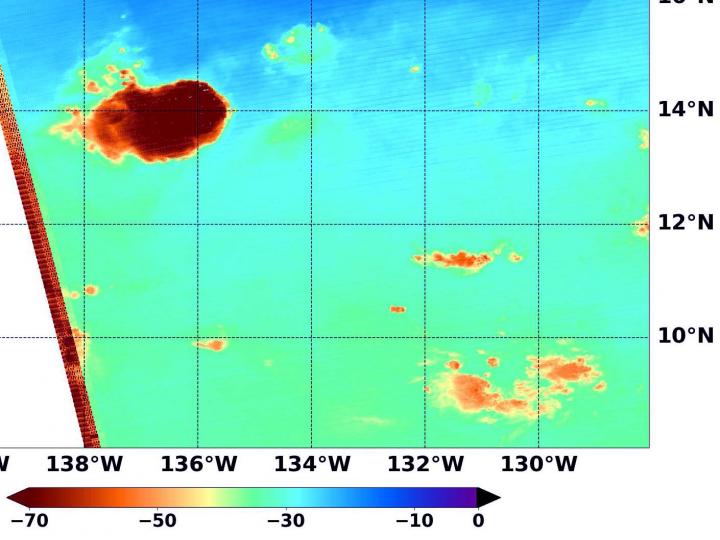
Credit: Credits: NASA/NRL
Tropical Depression 10E weakened to a remnant low-pressure area in the Eastern Pacific Ocean. NASA’s Terra satellite observed the water vapor content in the storm.
At 5 p.m. EDT on Sunday, Aug. 16, NOAA’s National Hurricane Center noted that the depression had been devoid of organized deep convection for the previous 24 hours at at that time and lacked any convection. NHC therefore classified 10E as a post-tropical as a non-convective remnant low-pressure area.
Water vapor analysis of tropical cyclones tells forecasters how much potential a storm has to develop. Water vapor releases latent heat as it condenses into liquid. That liquid becomes clouds and thunderstorms that make up a tropical cyclone. Temperature is important when trying to understand how strong storms can be. The higher the cloud tops, the colder and stronger the storms.
NASA’s Terra satellite passed over 10E’s remnants on Aug. 17 at 1:35 a.m. EDT (0535 UTC) and the Moderate Resolution Imaging Spectroradiometer or MODIS instrument gathered water vapor content and temperature information. MODIS data showed a small area of coldest cloud top temperature, that were as cold as or colder than minus 63 degrees Fahrenheit (minus 53 degrees Celsius).
On Aug. 17 at 11 a.m. EDT, the National Hurricane Center (NHC) noted that there was a small area of showers and thunderstorms over the far southwestern portion of the Eastern Pacific basin that are associated with the remnant low pressure area formerly known as Tropical Depression 10E. Environmental conditions do not appear conducive for significant development and regeneration of this system is not expected while it moves slowly westward.
NASA Researches Tropical Cyclones
Hurricanes/tropical cyclones are the most powerful weather events on Earth. NASA’s expertise in space and scientific exploration contributes to essential services provided to the American people by other federal agencies, such as hurricane weather forecasting.
For more than five decades, NASA has used the vantage point of space to understand and explore our home planet, improve lives and safeguard our future. NASA brings together technology, science, and unique global Earth observations to provide societal benefits and strengthen our nation. Advancing knowledge of our home planet contributes directly to America’s leadership in space and scientific exploration.
###
By Rob Gutro
NASA’s Goddard Space Flight Center
Media Contact
Rob Gutro
[email protected]
Original Source
https:/




